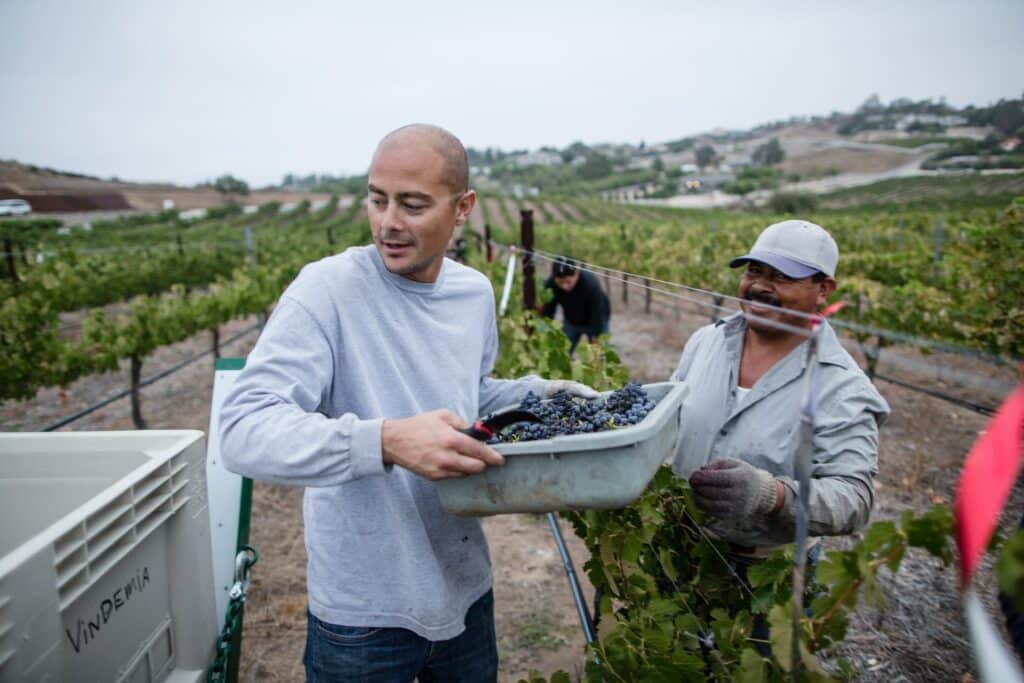Introduction – Sustainable Farms And Communities
We’ve talked about community gardens before. Today we’ll take the concept a step further and ask what needs to be done to make that community garden into a sustainable source of produce for the community. Building sustainable farms and communities means making choices that ensure the health and well-being of people, animals, plants, ecosystems, and the environment in the short and long term.

The Problems
Industrial-scale operations known as Concentrated Animal Feeding Operations (CAFOs) house tens of thousands of animals at once, all in the name of efficiency. While they are highly effective in producing large amounts of animal products, they come with a multitude of environmental, health, and ethical issues.
These realities underscore the interest in sustainable farming practices to reduce environmental impact and promote animal welfare, healthy soil, biodiversity, and fair working conditions.
What Solutions Might Look Like
This can include agricultural practices such as crop rotation, soil management techniques to conserve water and nutrients, choosing energy-efficient equipment for production and processing, reducing waste generated from production, restoring habitats for endangered species, integrating wild pollinators and beneficial insects into cultivation systems, and utilizing renewable sources of energy.
It also involves making thoughtful decisions about purchasing infrastructure materials, such as locally sourced organic products, to support the local economy. Community sustainability strategies involve initiatives to promote social equity, such as fair wages for farmers and workers at all levels; educational opportunities that are easily accessible to everyone.
The inclusion of minorities in decision-making processes; promoting diversity among cultures; supporting volunteer programs within organizations or projects; providing eco-friendly alternatives to conventional behaviors like composting food waste or using mass transportation instead of cars.
The Benefits Of Sustainable Farming And Communities
The benefits of sustainable farming and communities are numerous and far-reaching. The practice of sustainability helps protect our precious natural resources for future generations. Using sustainable agriculture techniques can significantly reduce pollution, often caused by fertilizers, herbicides, and insecticides.
Additionally, sustainable agricultural practices have been shown to increase available land for wildlife habitats and provide homes for displaced wildlife due to development or deforestation. Sustainable farming also has the potential to increase biodiversity within the agricultural system, creating a healthy food chain.
The increased diversity encourages pollinators such as bees and butterflies while avoiding the disruption of their delicate ecosystems. In addition, sustainable communities create local jobs that support community-based industries such as food truck owners and farmers’ markets, providing money back into the local economy and creating a healthier climate for everyone involved.
The positive effects also extend outside of these communities by providing sustainability education to others looking to incorporate more environmentally friendly practices into their own lives. The benefits of sustainable farming and communities offer a wealth of advantages that promote a more secure present day while ensuring a better future for us all.
How To Go About Building A Sustainable Farm Or Community?
Building a sustainable farm or community requires meticulous planning and execution. The first step is to assess the local environment and resources to determine which you can raise crops or livestock for maximum output with minimal inputs. It is then important to factor in potential natural disasters, such as flooding, drought, extreme temperatures, and pests that could affect crop production.
After this, you should create a plan to conserve resources by reducing the use of water and electricity whenever possible and practicing efficient irrigation methods such as the rotation of planting beds and drip systems. Minimizing chemical fertilizers and pesticides while still protecting crops from threats, utilizing composting techniques or compost tea fertilizer instead of synthetic fertilizers, taking measures to halt soil erosion, and preventing propagation of pests through adequate crop rotation and pest control methods such as companion planting.
Additionally, it is important to consider the economic viability of what will be produced on the farm by researching current market prices regularly and keeping up-to-date on the applicable regulations governing local farmers’ markets. All these factors can help ensure that farms remain profitable and their communities thrive in a sustainable manner in the long run.
To keep up with changes in technology, policy, business, we’ve put together a list of great agriculture related blogs for our readers.
Good Agricultural Practices – GAP
GAP certification is a comprehensive standard that guides farmers on sustainable farming methods, ensuring a balance between economic profitability, social equity, and environmental health. For small farms, obtaining GAP certification can be instrumental in demonstrating adherence to globally accepted practices, such as optimized use of water and land resources, integrated pest management, reduced reliance on synthetic fertilizers and pesticides, and proper waste management.
GAP standards also cover areas such as responsible treatment of farm animals, food safety, and worker welfare, encouraging small farmers to build a holistic, sustainable operation that respects both the environment and those who work the land. Read more about successfully navigating the GAP certification process here.
Challenges That Come With Building A Sustainable Farm Or Community
Building a sustainable farm or community is one of the most rewarding experiences imaginable. Unfortunately, it’s also not without its challenges. One of the primary issues to consider when building a sustainable farm or community is access to adequate resources such as arable land, water, or energy; another challenge is breaking down existing social structures based on environmental unsustainability.
Beyond these two overarching considerations, other potential obstacles can include:
- Establishing secure and reliable sources for sowing seeds.
- Obtaining and managing necessary funding.
- Gaining support from government bodies and organizations.
- Ensuring that community members have access to affordable housing.
What does support from government bodies mean? The American government and its voters are supportive of farmers. There are barriers nevertheless. Farms are subject to food safety inspections if they’re operated as businesses.
It is also important to create an organizational system to manage labor forces effectively while finding a balance between honoring traditionally-honored labor practices and addressing gender disparities in workforce roles—all while staying devoted to providing clean food and fresh water in an ecologically mindful manner.
As evidenced by this laundry list of imperative aspects requiring thoughtfulness and attention before even enacting any actual farming initiatives, building a sustainable farm or community can be difficult—but no doubt worth every effort put into making one’s farm or community truly thrive!
Obtaining Funding
Many organizations and initiatives provide financial assistance tailored to specific groups with unique needs or challenges. For instance, female farmers may be eligible for grants offered by entities such as Women’s Agricultural Network and American Agri-Women, designed to enhance gender equity in agriculture and support women’s contributions in this field.
Similarly, veteran farmers can tap into resources from organizations like the Farmer Veteran Coalition, which provides funding to former military personnel in their agricultural ventures. Minority farmers also have opportunities to access funding from groups like the Minority Farmer Initiative and USDA’s Office of Partnerships and Public Engagement.
How Does Sustainable Farming Affect The Community?

Sustainable farming is an approach that seeks to improve the environmental and social performance of agricultural practices. It is rooted in the understanding that human well-being, livelihoods, and the health of our planet are all interconnected. How does it affect local communities?
In a multitude of ways, sustainable farming has the potential to positively shape the lives of those in rural areas. Through preserving natural resources and wild habitats, we can help ensure access to clean air and potable water for residents. Moreover, more abundant harvests can act as a buffer against food insecurity during disaster or hardship by promoting ecological balance and biodiversity.
Sustainable farms also prioritize education through farm tours and workshops on topics such as permaculture, soil health, and preserving native species — enriching the community’s knowledge base while strengthening connections with nature.
These are just some of the ways sustainable farming works with communities to achieve mutual benefit. When farmers succeed in virtualizing ecological regeneration into their system so that it is profitable for them and beneficial for locals, it creates a win-win scenario that bodes well for future generations.
Case Studies Of Successful Sustainable Farms And Communities
Case studies of successful sustainable farms and communities provide an insightful view into how these operations can succeed. A key element for many is the ability to adopt regenerative agricultural practices, meaning that they actively try to increase biodiversity and sequester carbon from the atmosphere.
Such practices may include:
- Agroforestry.
- No-till crop production.
- Rotational grazing.
- Providing habitat for beneficial wildlife such as honeybees or birds.
The successful case studies we have studied also prioritize food justice, bringing fresher and healthier dietary options to those previously disadvantaged by limited access to fresh food sources.
In some cases, farmer training initiatives are developed to transfer local knowledge between generations— an essential step in developing true sustainability. All in all, it’s inspiring to see so many innovative farmers leading the way in creating thriving permaculture-based farm systems that benefit our environment and communities.
Wrapping Up
In conclusion, sustainable farming has great potential for improving our environment and communities. By utilizing regenerative practices, promoting food justice, and fostering education on permaculture and other related topics, we can create an agricultural system that will continue to bring benefits to both nature and people long into the future. Through these efforts, we can work together to build a healthier and more sustainable future.
